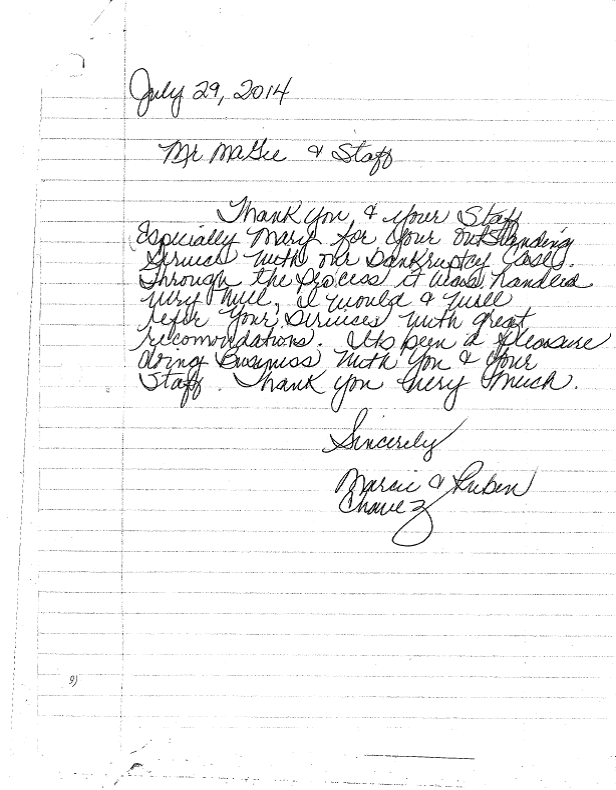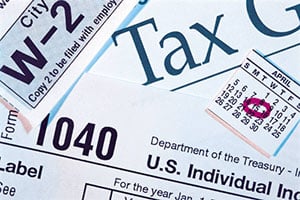In a chapter 7 bankruptcy case, the bankruptcy trustee looks for “nonexempt” assets that the petitioner—the person filing bankruptcy—has, and that can be sold. If any “nonexempt” assets are found by the trustee’s investigation, then the trustee’s next steps are to distribute the non-exempt equity from the sale of those assets to creditors.

Bankruptcy exemption planning is complicated
An Example Where The Petitioner Has Excess Equity Beyond Exemptions
If your home was worth $255,000, but you owed only $100,000 on the home, then the bankruptcy trustee could demand that you pay $25,000 to the bankruptcy court. If you did not pay the $25,000, then the bankruptcy trustee could then warn you that a possible consequence of nonpayment is that you could be evicted from your home, and that the trustee could sell your home, paying you $125,000 of the proceeds. Please note that the bankruptcy trustee in this scenario is demanding $25,000 even though what is owed is about $25-30,000 in non-exempt equity. This is a common practice to get matters moving along. In our hypothetical example, after the $100,000 remaining on the mortgage was paid off, and your allowed exemption of $125,000 was paid to you, then the remaining proceeds from the sale would be distributed to creditors.
Do Chapter 7 Bankruptcy Trustees Sell Houses Regularly In Cases Like The Example Above? Is That How It Usually Works In The “Real World” Of Bankruptcy?
The answers are ”no” and “no”. In my long experience as a bankruptcy attorney, here is how I would handle a situation like this case where the amount of equity in a home exceeds the allowed exemptions. I would try to make a deal that would allow you to keep your home. If the home were sold, around 8.5% of the gross dollar amount proceeds from the sale would be consumed in realtors’ fees and closing costs. The true net proceeds to the bankruptcy estate after paying off both the mortgage and your $125,000 exemption would be only about $8,325. My offer to the bankruptcy trustee would be to accept $5,000, and to not sell the home. The chances are good that the bankruptcy trustee would accept the offer because homes can be hard to sell these days, and the time required to make the sale can vary depending on the market conditions and other factors out of the trustee’s control. While on paper the non-exempt equity available from the home appears to be $30,000, you could pay as little as $5,000 to settle the issue even though you have over $125,000 in home equity.
Homes Are Not The Only Type Of Positive Equity Asset That You May Be Able To Retain
You may be able to keep assets with positive equity value, including cars, lump sum distributions, cash value insurance, and even jewelry. For example,
- You could have a car or truck worth a bit over $29,125 that you own outright, and still file for bankruptcy if your home has low or no equity.
- If you received a “lump sum” Veteran’s benefit of $35,000, or your ex-husband paid you a lump-sum of $30,000 for past due child support, you can still probably file for bankruptcy without losing any of these assets.
- You may be able to keep up to $51,450 (and maybe more) in whole life, life insurance policy value.
- You may be able to keep $27,600 in jewelry that you and your wife own.
You may be thinking that if each asset could be kept as described above, could you keep the $125k in home equity, the paid-off vehicle valued at $29,125, the $65,000 in VA lump sum benefits and child support cash, the $51,540 in life insurance contract value, as well as the $27,600 in jewelry without loss of any of these to a Chapter 7 bankruptcy trustee?
The answer is no. While you could likely keep all of the $65,000 in cash stemming from the VA “lump sum” award and lump sum child support payment regardless of value in any other item or property, you may not be allowed to keep both the $125,000 in home equity and the paid-off vehicle valued at $29,125 and the $51,450 whole life cash loan value policy as well as the jewelry with a combined value that exceeds $27,600. However, some combination of a subset of these assets might be possible to arrange without loss of the items to the bankruptcy court trustee. For example, if some of the assets were not quite as valuable as described above, then that could work in your favor.
However, regardless of the equity in your home, vehicle, jewelry, and cash value in a life insurance policy, the $35,000 in lump sum payments of Veteran’s benefits and $30,000 in past due child support that you received as a lump sum are likely both untouchable by the bankruptcy trustee. You could successfully file bankruptcy without surrendering either the cash received from Veteran’s Benefits and past due child support or the paid-off vehicle.
As I explained, while some of the assets like the jewelry and home equity can’t both be kept in a successful bankruptcy filing, you may be able to sell the jewelry and possibly move some of the funds into either the equity in your home or the life insurance policy? This approach may be perfectly permissible as I explain below.
You may ask if it is possible to could sell your jewelry and move the money into home equity, would it also be permissible to simply give the jewelry to a relative?
The answer is no. Pre-bankruptcy exemption planning like the sale of the jewelry and transfer of the proceeds of the sale to home equity or the life insurance policy is not always impermissible, and you might be allowed to move assets in a similar fashion before filing bankruptcy. However, giving away assets to a relative is not a good idea because the bankruptcy trustee may well go to your relative to retrieve them, and even sue your relative in Federal court for the value of the jewelry. In addition, you will likely lose your exemption for the value of the jewelry. The jewelry will be sold by the bankruptcy trustee, and none of the proceeds from the sale will be returned to you. You’ll be left with no jewelry, no happy relative, and no increase in either your home equity or your life insurance policy.
Handling Bankruptcy Exemptions Properly Requires a Skilled Attorney to Protect Your Interests
Let’s review an example in which your spouse died either in an accident or due to medical malpractice. You are left with several children to raise along with $50,000 in medical bills, $40,000 in credit card debt, and $15,000 in car repossession deficiency where your car was valued below the amount of the loan you owed when it was repossessed for failure to make your car payments.
However, you received $1 million in compensation from the at-fault party’s insurer as a settlement for the loss of your spouse. You could very likely successfully file for bankruptcy against the medical bills, credit card debt, and car repossession deficiency while not surrendering any part of the $1 million wrongful death settlement to the bankruptcy court trustee in order to pay your creditors. Because bankruptcy exemptions are so complex, I can’t say that you would achieve the same result if you had significant home equity. If you had $125,000 in home equity, for example, as well as the $1 million wrongful death settlement, you might have to surrender some portion of your assets for payment to the bankruptcy trustee and creditors.
Bankruptcy Exemptions Are the Same in All Bankruptcy Chapters
If an exemption applies in a personal Chapter 7 or 11 case, then it would also apply in a Chapter 13 filing. However, if you have non-exempt equity in assets, you might consider filing either a Chapter 13 or 11 case. In either Chapter 13 or Chapter 11, you can usually “repay” the value of the non-exempt portion of your assets to your creditors, and keep the asset. For example, if you had $155,000 in home equity, you could file a Chapter 13 case and repay about $25,000 to creditors over a period of up to five years. This works out to be about a maximum of $475 monthly, including attorney’s fees and Chapter 13 Trustee’s administrative fees. Our firm would typically charge about $1,600 in attorney’s fee up front in such a case.
You may recall that earlier in this post, I described an approach in a Chapter 7 case where the homeowner has a home worth $255,000 with a mortgage balance of $100,000. I explained that the homeowner might only have to pay $5,000 cash to the bankruptcy trustee to keep the home clear of sale by the bankruptcy court trustee. The reason that I gave that this approach would work is because the net realizable non-exempt home equity after paying the costs of the sale could be as little as $8,325. Now you note in the immediately preceding paragraphs on non-exempt assets that a debtor filing Chapter 13 would have to pay back $25,000 over five years at the rate of $475 monthly if the homeowner owned a home with exactly the same equity of $255,000 and a mortgage balance of $100,000. What explains the difference?
Bankruptcy Exemption Planning May Not be the Same in All Bankruptcy Chapters
The difference is explained by the Bankruptcy Chapter under which each of the example cases is filed. The first example was under Chapter 7 rules, and the second example case was filed under Chapter 13.
Currently, there are many fewer Chapter 13 cases being filed in our area, and the Chapter 13 Trustee’s staff has more time to examine each case that is filed. For the Chapter 13 example, I gave a “worst case” maximum expense scenario of $475 monthly. However, as an experienced practitioner in Chapter 13 law, I would to try to avoid a “worst case” scenario result for your case. I would propose to pay back the home selling costs of $8,325 instead of the $25,000 in equity after the sale of the home.
The Western District of Washington Chapter 13 Trustees’ offices have been more aggressive lately, and challenge all sorts of things which previously had long been regarded as reasonable. The estimated 8.5% in costs for the sale of the home might be challenged by the Chapter 13 bankruptcy trustee. If the challenge is successful, a debtor who seeks to keep their home would have to pay $475 monthly for sixty months in order to repay the hypothetical “liquidation value” of $30,000 after the sale of the home.
Now you understand that by the most conservative calculation that I can provide, the debtor who has $25,000 to 30,000 in home equity in this example should expect to pay $475 monthly. However, if the Chapter 13 Trustee will accept the 8.5% hypothetical sales cost in the calculation that I submit with your case, then I would propose in the Chapter 13 filing to repay the $8,325 hypothetical post-sale net result over a period of 60 months. This would lower the monthly repayments to only $175.00 monthly for 60 months in order to save the home.
Bankruptcy exemption planning can be tricky, and it is a huge field. Be careful who you trust with your bankruptcy case. Failing to discuss all of your assets with an experienced, qualified bankruptcy attorney can result in a lost opportunity to shelter property and personal items from loss to the bankruptcy court trustee.
I am very experienced in the practice of bankruptcy law, and in working on complex asset management and exemption cases. If you are considering a bankruptcy filing, then I would be more than pleased to help you. We will meet in person to list your assets and allow me to explain your rights, and then develop a plan that describes how your exempt property might stay that way—exempt!









